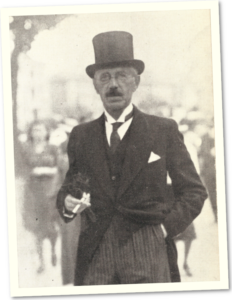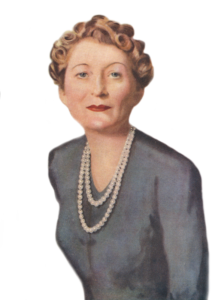The Centennial and Our Mission Today


On the afternoon of Wednesday, May 12th, 1920, Philip J. S. Richardson, editor of The Dancing Times, convened approximately two hundred dance teachers, plus press, in the Lower Hall of the Grafton Galleries in London.
The best dancers and teachers of England had been experimenting in the 1910s with new music and new approaches to dancing, especially the foxtrot — which “crept in” from New York mere weeks before the outbreak of the First World War — and especially since the Armistice. The gathering on May 12th, 1920, was the initial attempt to get on the same page and, as it was described, create “order out of chaos” — in Richardson’s words, to “eliminate what is bad” and “put what is good on a firm basis.”
This would be the first of several such conferences over the ensuing decade. This decade would also witness the introduction of competitions, the rise of champions, the establishment of the Ballroom Branch of the Imperial Society of Teachers of Dancing, the standardization of dances and figures, the codification of technique, the formation of additional professional and amateur associations and boards, the growth of dance halls and dance bands, and the beginnings of a proliferation of printed material and film.
The result was the development, spread, and supremacy of the English Style of ballroom dancing.
In the 1930s, the English Style had been perfected into an art form that was admired and studied around the world. Its principle themes were ease, grace, simplicity, comfort, good form, good taste, glamour, elegance, and, above all, movement — natural movement, beauty of movement, quality of movement.
In the subsequent decades, the story and legacy of these pioneers and first champions of ballroom dancing has been largely supplanted by trends in competition ballroom dancing from the later twentieth century to the present.
However, over the past couple of years, a small group of passionate dancers, under the guidance of a three-time national champion and renowned teacher, have rediscovered and begun the endeavor of recovering what Phyllis Haylor called the “original conception of the English Style.” The impact upon medal work and social dancing was instantaneous and profound, bringing life-changing joy and beauty.
Having experienced its fruits first-hand, we wish to commemorate the Centennial of the English Style by sharing its story and legacy with a new generation.
We are making our own the mission that Josephine Bradley, the “First Lady” of ballroom dancing, articulated as one of her aims in writing her memoirs: “to bring to a wider public an appreciation of ballroom dancing as an art having a scientific basis, which seeks to … impart ease and grace of movement.”
We hope to share this message with all those who yearn to derive the greatest joy and beauty from their dancing.
This mission carries added significance as a world in lockdown fights an unprecedented global crisis.
 During World War I and World War II, English ballroom dancing was pivotal in nurturing morale for those on both the frontlines and the home front, spawning, for instance, the first radio and television ballroom dancing shows in the 1940s, under the leadership of Victor Silvester.
During World War I and World War II, English ballroom dancing was pivotal in nurturing morale for those on both the frontlines and the home front, spawning, for instance, the first radio and television ballroom dancing shows in the 1940s, under the leadership of Victor Silvester.
Josephine Bradley, again in her memoirs, even wondered if the First World War played a role in cultivating the unsurpassed quality of the first English Style ballroom dancers who, “having just passed through a tremendous experience, and been so often under the shadow of death, were thus rendered more appreciative of the good things of life, more sensitive to their values.”
By recovering the art of the English Style, we can bring beauty and comfort into a world confronting the “shadows” of the “tremendous experience” it is passing through today. The exemplars of the English Style can help us renew our appreciation “of the good things of life” and “their values,” just as they did one century ago.
We don’t yet know when we shall be back out dancing. But we do know that one day we shall.
On this Centennial, let us turn to the pioneers, champions, and art of the English Style to help us prepare for that day.
We invite you to sign up for email updates to learn more.
Bring joy and beauty to your dancing and to the world
through the art of the English Style
Copyright © 2020-2024 English Style 100




